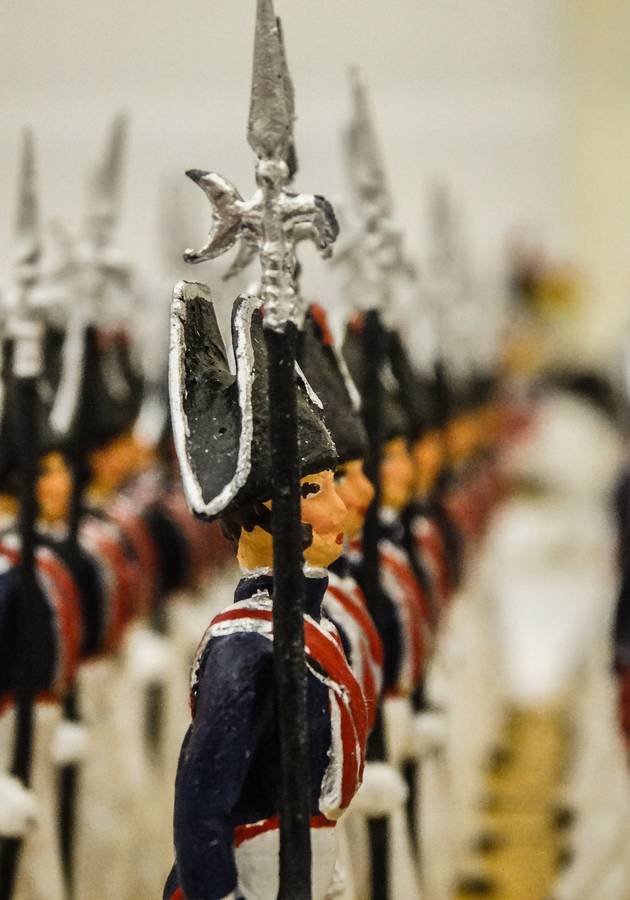When we think of ancient civilizations and (especially) civilizers, we think of the Greeks and the Egyptians, the Romans and the French, the Chinese and the Jews. Hardly anyone has ever dared to mention the Irish in the same breath. And yet, as historian Thomas Cahill captivatingly argues in his exquisite book “How the Irish Saved Civilization,” if it wasn’t for a few medieval Irish monks, the sentiments of the Renaissance and the Enlightenment – which, ironically, Ireland never got to experience itself – would have never taken the continent by storm, and our world would have been decidedly different from the one we currently inhabit. Get ready to discover more about this thought-provoking connection!
An overview: on the hinges of history
Over the course of the fourth and fifth centuries, many of the territories ruled by the Roman Empire in Western Europe and northwestern Africa fell to various invading or indigenous tribes of Germanic peoples: Visigoths, Angles, Saxons, Huns, Ostrogoths. Beginning sometime around 376, the process culminated exactly one century later, when the barbarian King Odoacer deposed Romulus Augustulus, the last ruler of the Western Roman Empire. Ancient Rome – an empire once housing roughly one-fifth of the world’s population and the most advanced society the world had ever seen up to that point – was suddenly no more. Its demise, many feared, threatened to trigger the death of Western civilization itself, putting an end to 11 centuries of literacy, poetry and philosophy. After all, the uneducated invaders of Rome weren’t interested in science and art – but rather in gold, food and women.
Fortunately, as these “unwashed barbarians” were looting artifacts and burning books in Italy and Southern Europe, a Romano-British Christian missionary was training a group of monks to read and write on an island at the northern edges of the continent, one seemingly stuck in prehistory for millennia. Over the following few centuries, these monks would take up “the great labor of copying all of western literature – everything they could lay their hands on” and then, banished themselves from their island to the continent by Viking invaders, would serve as “conduits through which the Greco-Roman and Judeo-Christian cultures would be transmitted to the tribes of Europe.”
“Without this Service of the Scribes,” writes Cahill, “everything that happened subsequently would have been unthinkable. Without the Mission of the Irish Monks, who single-handedly refounded European civilization throughout the continent in the bays and valleys of their exile, the world that came after them would have been an entirely different one – a world without books. And our own world would never have come to be.” Not since a small Spartan Legion held back tens of thousands of violent Persians at the Hot Gates of Thermopylae in 480 B.C., had western civilization been put to such a test as it was when the barbarians decided to descend upon Rome. That’s where our story begins: in the ancient capital of the world, in the first years of the fifth century after Christ, at a time where very few people could foresee the coming collapse of the world.
The end of the world: Alaric and the sack of Rome
Throughout most of the glorious history of Rome, the Rhine and the Danube – the two longest rivers in Europe – formed its natural northern frontier, separating the vastest and most powerful empire in human history from the unsubdued Germanic tribes roaming the Central European steppes ever since the first century. When a terrible drought at the end of the fourth forced the Huns to move westward from Asia, the Goths, Visigoths, Vandals, Alans and Sueves, fleeing from their mighty invaders, were pressed into moving southward and seeking asylum inside Roman borders.
Denied and starving, some of them resolved to enter the Roman Empire by force, beginning in the year of 376. The ensuing Gothic Wars were costly: though the Roman Empire overcame them, it did so shaken and in ruins. Theodosius the Great, the ruler who made Christianity the state religion of the Roman empire, somehow managed to broker a peace agreement with the Goths, while fighting a destructive civil war at home. But then, in 395, he died, without consolidating power. And then, on the last day of 406, the Rhine – the widest river in Europe – froze solid, “providing the natural bridge that hundreds of thousands of hungry men, women, and children had been waiting for.”
Nothing could stop the barbarians now. They made their charge across the bridge of ice head-on, “without forethought or strategy,” led by desperation and promises of food and shelter. Just three and a half years after this fateful event, the Romans woke up to find Alaric, king of the Visigoths, parked at their gates with all of his forces. Finding the sight outrageous, they immediately sent envoys to conduct a few tiresome talks with the barbarian king in hope they would reach some kind of a peace agreement that would send Alaric away. The negotiations began with a threat. The Romans told the Visigoths they would spare no one if Alaric decided to cross the gates of their eternal city. After all, they said, they were far more numerous and better equipped. “The thicker the grass,” replied Alaric shrewdly, “the more easily scythed.”
Realizing that Alaric was not someone they could easily fool – nor someone they could afford to bluff against furthermore – the Romans next asked him what they could give him to make him leave for good. The mighty Visigoth replied with an answer none of them had expected. “Nothing,” he said. “My men would either way sweep through your city, stealing all your gold, silver and slaves.” “But,” protested the Roman emissaries, “what will that leave us?” Alaric is said to have paused here briefly before uttering two simultaneously comforting and frightening words: “Your lives.” In Alaric’s pause, Cahill writes, “Roman security died and a new world was conceived.”
The fall: a story of confidence and complacency
In the half a century between the sack of Rome by Alaric in 410 and the death of the last Roman ruler in 476, the Roman empire grew increasingly unstable. But in hindsight, it is not an exaggeration to say that it had been unstable for a while – and precisely because it had feigned stability for centuries. Fifth-century Rome was, simply put, too complacent and too pompous to deal with unexpected events such as the freezing of the Rhine and the coming of the Goths. The eternal city had rested on its laurels for far too long to even notice that the illiterate tribes beyond its northern borders had set their sights on nicking them.
Take, for example, Ausonius, a teacher of rhetoric and a celebrated poet whose life spanned roughly from the beginning to the end of the fateful fourth century. By his “effete contemporaries,” he was considered a worthy descendant of Virgil and Cicero, and yet his derivative poetry is mind-numbingly boring, mostly contending with things such as forebears and trivial matters of daily life. But, then again, Ausonius’ life wasn’t too dynamic either: he spent most of it peacefully farming his vineyards on his “impressively large, exquisitely maintained country estate in Bordeaux in the province of Gaul.”
He was doing just that in the midst of the German migration over the Rhine. Though a poet and a scholar, Ausonius didn’t see anything momentous in the event, not even something worthy of a hexameter or two. It seems that when you’re strolling through paradise, it’s difficult to even think about the Apocalypse, let alone sense it. “This was a static world,” writes Cahill of Rome before its fall. “Civilized life, like the cultivation of Ausonius’s magnificent Bordeaux vineyards, lies in doing well what has been done before. Doing the expected is the highest value – and the second highest is like it: receiving the appropriate admiration of one’s peers for doing it.” Edward Gibbon, the most famous historian of the decline of Rome, wrote in 1776 that “the poetical fame of Ausonius condemns the taste of his age.” Cahill goes a step further: he claims that it condemns the Age as well.
Augustine of Hippo, “almost the last great classical man”
Unlike Ausonius, his contemporary Augustine of Hippo was an attentive man: he was one of the first to raise a red flag over the Germanic invasions and quite possibly the first one to ask where they might lead to. This should surprise nobody: Augustine of Hippo was a member of a dying breed in fourth-century Rome – a philosopher turned toward himself, an intellectual interested more in truth and wisdom than in rhetorical devices and persuasive skills.
“The life of Ausonius can show us the why of the Fall, but it gives us nothing to weep for,” writes Cahill. The life of Augustine of Hippo, on the other hand, reveals what kind of a glorious tradition was at stake when the barbarians first entered Rome and began burning its libraries. It also reveals yet another way in which the civilized world had gone askew by then. For Augustine was both more and less than most history books make him out to be. He was, in Cahill’s opinion, two people in one: “almost the last great classical man – and very nearly the first medieval man.”
Born in Numidia, Roman North Africa, Augustine was the son of a devout Christian mother and a pagan father who had converted to Christianity on his deathbed. Although raised a Catholic, Augustine became a Manichean in his teenage years, but was soon after drawn to Plato and Neoplatonism. In late August of 386, at the age of 31, in the midst of an emotional breakdown caused by his inability to control his primal urges, he heard a child’s voice chanting nonsense from a house bordering his garden: “take, read, take, read.” He decided it was a sign meant for him, so he went home immediately and took from the table a book he had been reading earlier: an edition of St. Paul’s letters.
“In the time-honored fashion of the ancient world,” Augustine opened St. Paul’s letters at a random page, and this random page turned out to hold the 13th chapter of St. Paul’s Epistle to the Romans. The first sentence Augustine’s eyes fell upon was the chapter’s 13th verse: “Not in carousing and drunkenness, not in sexual immorality and debauchery, not in dissension and jealousy; rather, clothe yourselves with the Lord Jesus Christ, and do not think about how to gratify the desires of the flesh.” And so, he did. This event changed Augustine’s life for good – and the course of history as well.
St. Augustine, “very nearly the first medieval man”
After his conversion to Christianity, St. Augustine – better read and more curious than all of his contemporaries – developed his unique interpretation of the Scripture, so influential and respected that it would outlive him by a millennium. The only problem with it was that Augustine grew to believe that his reading of the Bible was the only authentic one. So, mirroring the fall of Rome, he became a victim of his confidence, yet another casualty of complacency. He became, simply put, a precursor of the medieval church fathers who practiced a strict form of Christianity that allowed no other. One that eventually made way for the Dark Ages and the Inquisition.
You see, in his youth, Augustine was an inquisitive, but also a troubled man, frequently overcome by “raging lusts” he could not control. Looking into his own heart, he found there “the inexpressible anguish of each individual, which enabled him to articulate a theory of sin that has no equal.” An explorer of the dark side of human nature, the older Augustine decided to wed his immense learning with the great tradition of Roman law. So, he laid down a few philosophical laws of love of life, determining that Christ’s main contribution to the history of thought was his resolve to curb humanity’s destructive instincts.
Whereas Augustine of Hippo was a tormented, but curious sinner, St. Augustine was a composed, but narrow-minded ascetic. In an attempt to simultaneously explain away his supposedly impure urges and his very genuine lifelong guilt over them, he devised the doctrine of “the original sin.” We are all born sinful, Augustine argued, with a built-in proclivity to disobey God and do bad things. We can trace the root of this proclivity all the way back to Adam’s fall. Ever since, we’ve passed it from generation to generation through sex. “Lust is the daughter of sin,” wrote St. Augustine, and also “the mother of many other sins, because whatever comes into being through sex is bound by Adam’s original sin from birth.”
In other words, St. Augustine decided that sex and passion were bad and that only celibates and abstainers had a shot at holiness. Everyone who disagreed with him was not only wrong, but a heretic as well. “For all his greatness,” concludes Cahill, the older Augustine became “the type of the evil cleric, full of mercy for those who fear him, full of seething contempt for those who dare oppose him, scheming to make common cause with Babylon and whatever state-sponsored cruelty will, in the name of Order, suppress his opposition.” Fortunately, a contemporary of his believed there was a different way.
Patricius, a different kind of saint
St. Augustine died in 430 B.C., in his birth city of Hippo, besieged at the time by the Vandals. Fearing that the invaders may be exacting God’s vengeance for human’s sinfulness, he gave specific orders to his followers that his library and all of its thousands of books be carefully preserved. By some miracle, they were indeed spared by the barbarians: if we are to believe contemporary witnesses, the Vandals supposedly destroyed everything in Hippo, except for Augustine’s church and his library. Little did St. Augustine knew that his own doctrines were almost as big a threat to his books as were the Germanic tribes. A century after his death, many of them would be burned after being declared to be heretical.
Fortunately, the year that St. Augustine died, somewhere in Gaul, a 45-year-old Romano-British man of limited formal education was ordained to priesthood by a bishop of the Western Church. Two years later, he decided to set sail for Ireland – at the time, an uninviting, desolate island populated by “illiterate, aristocratic, seminomadic, Iron Age” peoples called the Celts. This man’s birth name was Patricius. History remembers him as Patrick. St. Patrick.
A Romanized Briton born in the year 387, Patricius was the son of a tax man named Calpurnius, and the grandson of a Catholic priest named Potitus. In other words, he was “a typical middle-class lad, a Romanized Briton looking forward to a classical education and a career.” Yet, it wasn’t meant to be: when Patricius was a carefree teenager of 16, he was kidnapped by a group of Celt pirates and taken to a slave market in Ireland. He spent the following six years of his life living as a “shepherd-slave in the Irish district of Antrim, as the property of a local ‘king’ named Miliucc.”
As much as he would try to after his daring escape from slavery at the age of 22, Patricius would never make up for the formal education he missed while herding sheep in Ireland. “His whole life,” informs us Cahill, “will be shadowed by his ignorance of Latin style, and his consequent inability to communicate with distinguished men.” Even so, Cahill goes on, “Patrick’s emotional grasp of Christian truth may have been greater than Augustine’s.”
Whereas Augustine discovered the dark side of Christianity while peering inside his own, immensely civilized heart, St. Patrick discovered the bright side of human nature while looking deep into the hearts of others, the hearts of apparent brutes, mind you! In fact, it’s not an exaggeration to say that he was the first human being in known history to honestly believe that “even slave traders can turn into liberators, even murderers can act as peacemakers, even barbarians can take their places among the nobility of heaven.” What is more, he proved it.
The transformation of Patricius
Before his enslavement, Patricius didn’t really believe in God and found priests such as his grandfather quite foolish. However, during the six years of “woeful isolation” in that Iron Age Ireland – while living among people whose language he couldn’t understand, separated from his parents and friends seemingly for good – he found nobody to turn to but God. “I would pray constantly during the daylight hours,” he wrote in his autobiography titled “Confessio.” “The love of God and the fear of him surrounded me more and more – and faith grew and the Spirit was roused, so that in one day I would say as many as a hundred prayers and after dark nearly as many again.”
In the process, the Patricius of yesterday was slowly becoming the St. Patrick of tomorrow. The event that marked the culmination of this transformation occurred on his last night as Miliucc’s slave, when he received his first outwardly experience. “Your hungers are rewarded,” said a mysterious voice in Patricius’ dreams. “You are going home.” The voice also told him that his ship was ready and that it was waiting for him. Choosing to believe the divine nature of the message, Patricius fled his master and walked some 200 miles through unchartered territories to reach an inlet near Wexford, where there was indeed a ship about to set sail. With some difficulty, Patrick managed to persuade the captain to take him aboard and, after a few years and a couple of adventures, he made it home to Britain at last.
“Hardened physically and psychologically by unsharable experiences,” this Patrick was a different man from the Patricius his parents had been waiting for for so long. For one, Patricius was a happy-go-lucky teenager; Patrick, on the other hand, was a deeply troubled man. He was not only disturbed by some unknown sins of his past, but also anxious about what lay ahead in his future. He felt as if he had been chosen by God to fulfil some kind of a mission, but he didn’t know what the mission was or how he was supposed to find out. And then, he received a second message in another dream. Nobody could have known back then, but this dream – from wherever it came – turned out to be just as responsible for saving Western civilization as those 300 Spartans at the Gates of Thermopylae.
The transformation of Ireland by St. Patrick
One night in his thirties, Patrick dreamed about a man named Victoricus who had come to him from Ireland with countless letters, one of which was addressed to him personally. It was titled Vox Hiberionacum, “The Voice of the Irish.” As Patrick began reading the letter while standing beside a lush forest near the Western Sea, he heard the voice of a multitude crying into his ear: “We beg you to come and walk among us once more.” “Stabbed in the heart,” he could read no more. He woke up, aware of his mission and ready to fulfill it.
In 432 – two years after the death of St. Augustine – St. Patrick became “virtually the first missionary bishop in history.” He went back to the island where he had once been a shepherd-slave, strongly determined to transform it from the wild, warrior society it was to a peaceful, scholarly kingdom of faith. Legends say that he did much more than that. Among other things, he is said to have banished the snakes out of Ireland and to even have been the man to introduce the symbol of the shamrock to the country as a way to explain the Holy Trinity. Though neither of these things can be verified, the things that can unmistakably testify to Patrick’s greatness and his success.
“He succeeded beyond measure,” writes Cahill. “Within his lifetime or soon after his death, the Irish slave trade came to a halt, and other forms of violence, such as murder and intertribal warfare, decreased. In reforming Irish sexual mores, he was rather less successful, though he established indigenous monasteries and convents, whose inmates by their way of life reminded the Irish that the virtues of lifelong faithfulness, courage, and generosity were actually attainable by ordinary human beings and that the sword was not the only instrument for structuring a society.”
Though outside of Ireland Patrick was for a long period as little known as St. Augustine was on the Emerald Island, the greatness of this humble man should be beyond dispute. He was, if nothing more, “the first human being in the history of the world to speak out unequivocally against slavery.” He was also one of the first Christians to see the universe as a “Great Sacrament, magically designed by its loving Creator to bless and succor human beings.” Where St. Augustine found insuperable sin and regret, Patrick found his inner calling and a chance for self-improvement. When he died in 461, he left behind a rapidly modernizing Ireland of peace, generosity and faith, a land no longer drowning of blood and dread. At that moment, the Roman Empire of St. Augustine was knee-deep in chaos and confusion, just 15 years away from its final demise.
Different kinds of martyrdom
Owing to St. Patrick’s charisma and his soft form of Christianity, Ireland holds a unique place in religious history as “the only land into which Christianity was introduced without bloodshed.” Unlike St. Augustine, who believed that we are born sinful, St. Patrick preached that Christ died for our sins on the cross and that no more human sacrifice was necessary. This notion, however, left an interesting problem for Patrick’s successors: a land without martyrs. In their absence, there were no role models to inspire future converts nor a native, worldly illustration of what an exemplary Christian life looked like.
Fortunately for Western civilization, the Irish bishops of the late fifth and early sixth centuries found a back door, coming up with a fascinating solution: the intriguing theory of “threefold martyrdom.” A man didn’t need to be tortured for faith’s sake to be consecrated a martyr, they argued: one could also become a martyr by serving other people’s interests rather than their own. So, in addition to the conventional “red martyrdom of blood,” the early bishops of Ireland devised two more modes of martyrdom – green and white. There was a difference between the three, of course, but only in degree, not in type. All martyrs were martyrs for a reason.
In Ireland, the title of red martyr was bestowed upon believers who had suffered violent deaths by religious persecution. The titles of green and white martyr, on the other hand, came to be reserved for people willing to sacrifice parts of their lives in the name of Christ. More precisely, green martyrs were those who, “leaving behind the comforts and pleasures of ordinary human society, retreated to the woods, or to a mountaintop, or to a lonely island to study the scriptures and commune with God.” Those who, like St. Patrick, had resolved to go a step further and leave not only their home, but their land as well – with the sole objective of spreading the world of Christ beyond the borders of Ireland – came to be known as white martyrs.
It was the green martyrs who renovated Ireland by establishing its monastic tradition. It was the white martyrs who renovated the world – or, rather, prevented the world from forgetting its roots – by exporting Ireland’s monastic tradition to the continent. While St. Augustine’s strict version of Christianity was spreading across Europe like wildfire – burning the supposedly heretical books of Aristotle, Plato and the entire Greco-Roman library – Ireland’s green martyrs were indiscriminately transcribing these very same books on their peaceful island, far from the madding crowds. Then, dressed like Celtic druids, their successors, the white martyrs, “began to set off in every direction, bent on glorious and heroic exile for the sake of Christ.” With them, they brought Europe back its books – and reminded the continent of its past magnificence and grandeur in the midst of some very dark years. And that’s how the Renaissance started.
How the Irish saved civilization
Patrick’s most famous successor – and the greatest Irish figure after the island’s patron saint – was Columcille, the prince of Clan Conaill. Born about 60 years after Patrick’s death, St. Columcille could have been a king – even the High King – but chose to be a monk instead. He founded several monasteries across Ireland before being exiled in 564 to Iona, off the west coast of the land we now call Scotland. By the time Columcille died in the last years of the sixth century, 60 monastic communities would be founded in his name “along the jagged inlets and mountainy heights of windswept Scotland.”
Columcille was still alive when St. Columbanus, a white martyr of strong Irish identity, set out with 12 companions for Gaul where he founded, in quick succession, “three forest monasteries among the barbarous Sueves – Annegray, Fontaines, and Luxeuil.” By the time Columcille died a quarter of a century later, about 100 monasteries would be founded in his name, each of them filled with “literate druids,” each of them, in turn, bent on returning the classical tradition to Europe.
Ironically, around this very time, Pope Gregory I sent an envoy, led by Augustine of Canterbury, in an attempt to evangelize the English. Officially, this was the first papal mission to the pagans of the North – a whole century and a half after Patrick had brought the gospel to the Irish and at least 40 years after Columcille had departed to the Scots. The result was a clash between two interpretations of the Testaments: Romanized Augustinian Christianity and St. Patrick’s Celtic Christianity. In 664, at the Abbey of Whitby, the Northumberland king ruled in favor of the “Roman party.” Afterward, the Vikings came, and the Irish didn’t just lose their unique form of Christianity and cultural superiority, but they lost their land as well. It would take them centuries to get it back.
Fortunately, however, by this point, they had assured the transmission of European civilization – at least on the continent. “Wherever they went,” Cahill writes, “the Irish brought with them their books, many unseen in Europe for centuries and tied to their waists as signs of triumph, just as Irish heroes had once tied to their waists their enemies’ heads. Wherever they went, they brought their love of learning and their skills in bookmaking. In the bays and valleys of their exile, they reestablished literacy and breathed new life into the exhausted literary culture of Europe. And that is how the Irish saved civilization.”
Final notes
“How the Irish Saved Civilization” is everything a book of its kind should be: well-researched, provocative, illuminating. It is also something very few history books are lately: well-written and immensely witty.
True, the book is riddled with a few rather lengthy and irrelevant quotations and many unnecessary oversimplifications, but we feel that any reviewer who chooses to focus on them is missing the big picture. And the big picture is that “How the Irish Saved Civilization” – precisely because of its “essentially Gibbonesque view” – is a breath of fresh air in one rather stale genre.
If you like your history books to be fun, sweeping overviews of periods and people, then look no further than this charming, enlightening book. Also, look no further if you’re looking for a great St. Patrick’s gift for the bookworms you have in your life. Especially if they are history buffs. Or Irish.
12min tip
We’ll leave you with a quote which metaphorically and beautifully pits “the rich and powerful” Romans of history with its humble and forgotten saints. Here are Cahill’s exact words: “If our civilization is to be saved – forget about our civilization, which, as Patrick would say, may pass ‘in a moment like a cloud or smoke that is scattered by the wind’ – if we are to be saved, it will not be by Romans but by saints.”




























